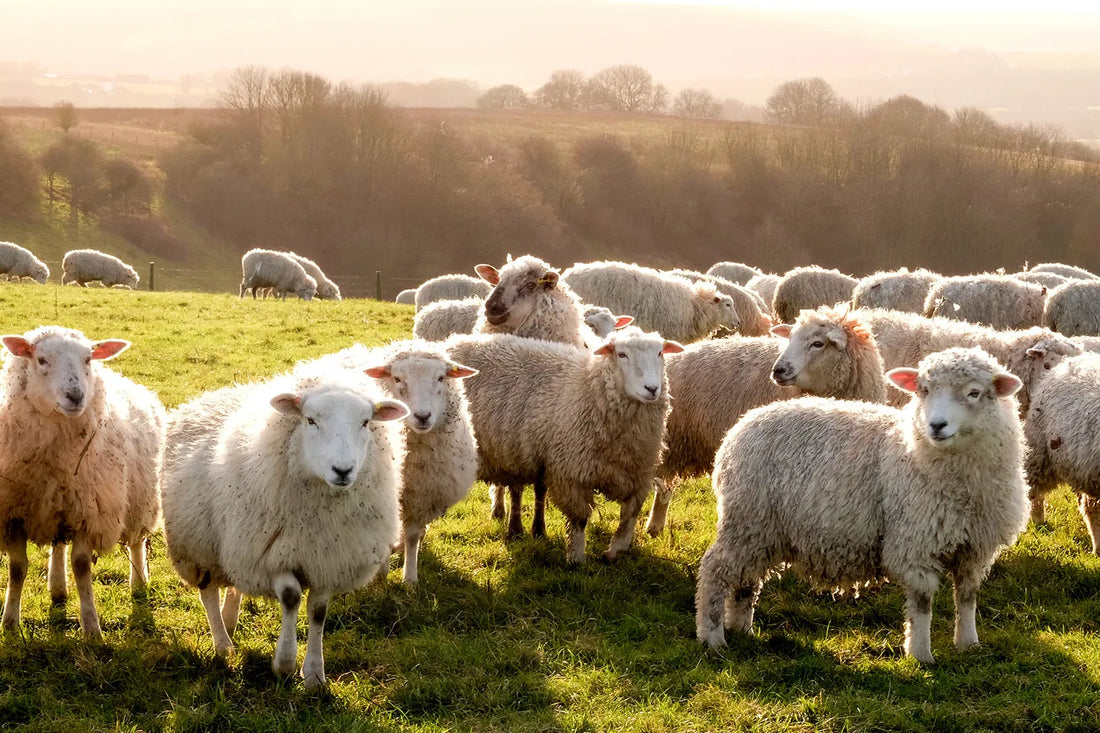
4 min read
Healthy Materials Series: Wool
WLLW explores wool’s rich history, natural health benefits and its enduring role as a sustainable, versatile material in interior design and everyday living.
WORDS Elissa Rose
In this installment of our ‘Healthy Materials Series’, we delve into the rich history and enduring appeal of wool. Wool production dates back thousands of years, with evidence of its use as early as 6,000 BCE in Mesopotamia. This versatile fiber was essential to ancient civilizations such as the Sumerians and Egyptians, who used it for clothing and trade. Over time, sheep breeding spread to Europe, where wool became a cornerstone of the medieval economy, particularly in countries like England and Spain. The expansion of trade routes solidified wool’s place in the global textile industry.
Today, wool remains a sought-after material, celebrated for its durability, natural texture and sustainability. From carpets and upholstery to blankets and drapes, wool continues to play a central role in interior design, offering both aesthetic appeal and functional benefits. So why is wool a healthy material?

Piles of wool in a shearing shed. Photo courtesy of Field of Vision/Adobe
Health Impact
Wool is naturally breathable, helping to regulate temperature and absorb excess moisture, which creates a balanced and comfortable indoor space. Its moisture management also supports healthy indoor air quality by reducing humidity, preventing conditions conducive to allergens. Wool’s inherent flame resistance eliminates the need for added chemical retardants often used in synthetic materials. Additionally, wool’s hypoallergenic properties make it resistant to mold, dust mites and bacteria, offering a cleaner option for those with sensitivities and promoting a healthier overall living environment without reliance on harsh chemicals.
Environmental Impact
Wool is a highly renewable resource, being biodegradable and sustainable by nature. Sheep can be shorn annually without harm, ensuring a continuous supply of wool. When wool reaches the end of its lifecycle, it naturally decomposes, returning valuable nutrients to the soil and leaving behind a minimal ecological footprint. Wool's exceptional durability also enhances its sustainability, as products made from wool tend to last longer, reducing the need for frequent replacements and waste. However, sheep farming does raise environmental concerns, such as land degradation and greenhouse gas emissions. Implementing sustainable farming practices, like rotational grazing, can significantly alleviate these impacts by maintaining healthy ecosystems and reducing environmental strain.
In addition, the wool industry is increasingly adopting ethical farming techniques that prioritize animal welfare and reduce ecological damage. Sustainable wool certifications, such as the Responsible Wool Standard (RWS), ensure that wool is sourced from farms practicing humane animal treatment and responsible land management.

Raw new wool. Photo courtesy of Kerstin Kuehne/Adobe
Pros
- Wool is long-lasting, reducing waste and the need for frequent replacements.
- It’s a natural, breathable material, contributing to better indoor air quality.
- Wool is hypoallergenic, reducing allergens in the home environment.
- It’s naturally flame-resistant, eliminating the need for toxic flame retardants.
- Wool is biodegradable and renewable, supporting a sustainable life cycle.
Cons
- Intensive sheep farming can contribute to environmental degradation and emissions.
- High-quality wool products can be expensive, making them less accessible to some consumers.
- While wool is biodegradable, certain treatments and finishes can delay decomposition.
- Sheep farming can also result in water consumption concerns, as large quantities of water are often needed for both livestock and processing.
- Wool can sometimes be treated with synthetic chemicals or dyes that may affect indoor air quality.

Handcrafed textiles on a wooden loom. Photo courtesy of Zephyr P./Adobe
Typical Finishes and Treatments
Wool is often treated with chemicals to enhance durability, moth resistance and stain repellency. However, these treatments can sometimes introduce harmful compounds like Volatile Organic Compounds (VOCs) into the product. Additionally, synthetic dyes used in some wool products may release toxins, affecting indoor air quality and reducing the material’s inherent benefits. Natural, untreated wool dyed with plant-based or low-impact dyes is the healthiest option for those prioritizing air quality and sustainability.
Terms to Avoid
Avoid synthetic wool blends, which often contain petroleum-based fibers that diminish wool’s natural benefits. Look for 100 percent wool products certified by reputable environmental and health standards.
Practical Tips
For the healthiest option, choose untreated or minimally treated wool products, and prioritize those with certifications like OEKO-TEX or Cradle to Cradle Certified.

TILE Cusion Covers crafted with merino and yak wool designed in collaboration with Teixidors and British architect John Pawson. Photo courtesy of Teixidors.
 Wool Maldwyn Stripe Sofa Throw by Mourne Textiles. Photo courtesy of Mourne Textiles |
 Blacksaw Straights Reversible Throw made from baby alpaca wool. Photo courtesy of Blacksaw |
 |
Pebble rug by Armadillo crafted from New Zealand hand-spun wool. Photo courtesy of Armadillo |
Feature Image: Gill/Adobe
Photography: Field of Vision/Adobe, Kerstin Kuehne/Adobe, Zephyr P./Adobe, Teixidors, Mourne Textiles, Blacksaw, Armadillo


